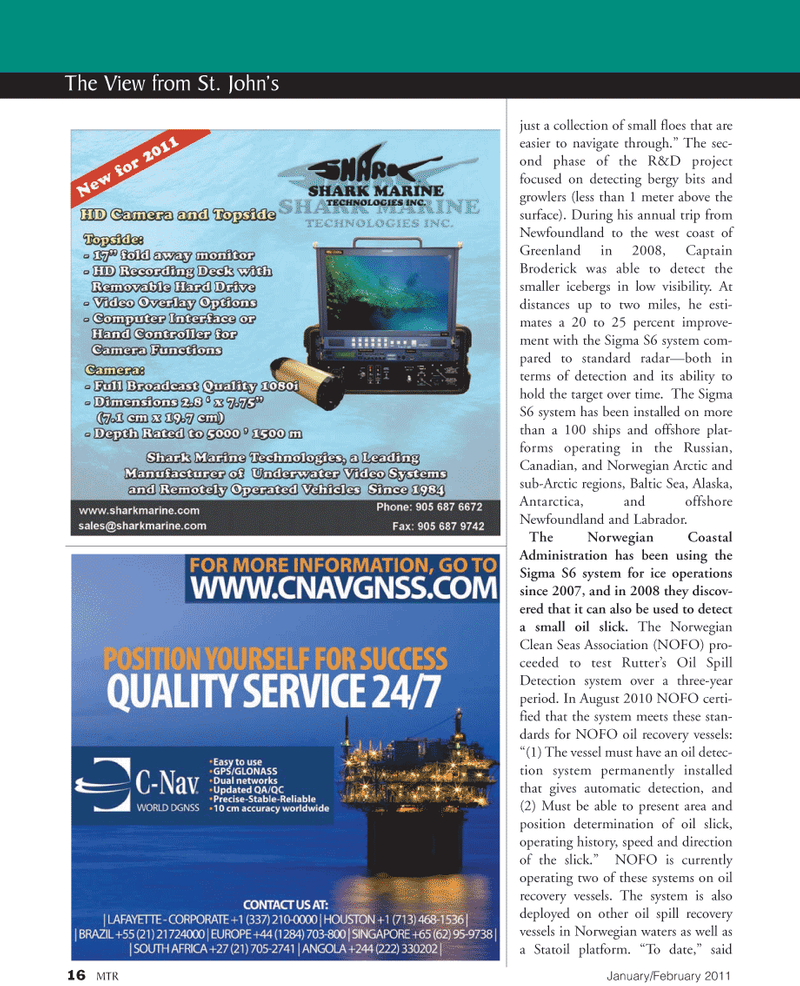
Page 16: of Marine Technology Magazine (January 2011)
Marine Salvage & Recovery
Read this page in Pdf, Flash or Html5 edition of January 2011 Marine Technology Magazine
16 MTR January/February 2011
The View from St. John’s just a collection of small floes that are easier to navigate through.” The sec- ond phase of the R&D project focused on detecting bergy bits and growlers (less than 1 meter above the surface). During his annual trip from
Newfoundland to the west coast of
Greenland in 2008, Captain
Broderick was able to detect the smaller icebergs in low visibility. At distances up to two miles, he esti- mates a 20 to 25 percent improve- ment with the Sigma S6 system com- pared to standard radar—both in terms of detection and its ability to hold the target over time. The Sigma
S6 system has been installed on more than a 100 ships and offshore plat- forms operating in the Russian,
Canadian, and Norwegian Arctic and sub-Arctic regions, Baltic Sea, Alaska,
Antarctica, and offshore
Newfoundland and Labrador.
The Norwegian Coastal
Administration has been using the
Sigma S6 system for ice operations since 2007, and in 2008 they discov- ered that it can also be used to detect a small oil slick. The Norwegian
Clean Seas Association (NOFO) pro- ceeded to test Rutter’s Oil Spill
Detection system over a three-year period. In August 2010 NOFO certi- fied that the system meets these stan- dards for NOFO oil recovery vessels: “(1) The vessel must have an oil detec- tion system permanently installed that gives automatic detection, and (2) Must be able to present area and position determination of oil slick, operating history, speed and direction of the slick.” NOFO is currently operating two of these systems on oil recovery vessels. The system is also deployed on other oil spill recovery vessels in Norwegian waters as well as a Statoil platform. “To date,” said

 15
15

 17
17
